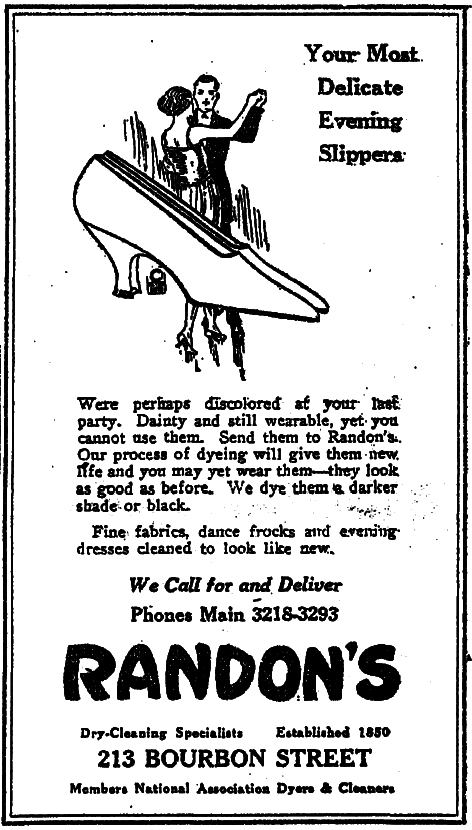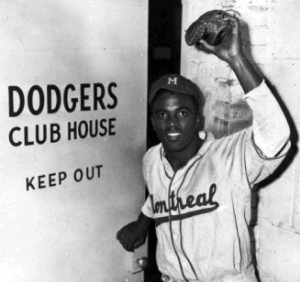|
Today in New Orleans History |
|
|
November 28


Tulane vs. LSU The "Battle for the Rag" was a rivalry game played by the LSU Tigers and the Tulane
Green Wave, played nearly every year since its inception in 1893, with the last of ninety-eight games being played in
2009. The winning team was awarded a satin trophy
flag known as the Tiger Rag at LSU and the Victory Flag at Tulane. The cover from the Saturday, November 28, 1931 program
shows that the game was played at Tulane Stadium that year. Tulane defeated the Tigers 34-7. By doing so, Tulane became the only major undefeated, untied team
to win the Southern Conference championship. Under head coach Bernie Bierman, the Green Wave went on the play in
the 1932 Rose Bowl, losing to the USC (University of Southern California) Trojans 21-12.
     Thanksgiving Day has fallen on November 28 in the years 2002, 1996, 1991.1985, 1974, 1968, 1963, 1957, 1946, 1929. 1918, 1912, 1907, and 1901. Vince Vance was inducted into the Louisiana Music Hall of Fame on November 28, 2010. R. Allen Eskew submitted plans for the International Pavilion for the Louisiana World Exposition at 805 Convention Center Blvd. on November 28, 1983. Multi-instrumentalist, composer, and arranger for the Ronnie Kole Septet, Ann-Margret, Irma Thomas,
and the Tonight Show Band, life-long Harahan resident Charles (Charlie) Brent Jr., was born on November 28, 1948.
He worked with the Contours, the New Era, Wayne Cochran & the C.C. Riders, Luther Kent & Trick Bag, the Chicken
Hawks, the Mambo Brothers, and many others. A talented player of the guitar and saxophone he toured with rock and soul bands
throughout the country and tutored local musicians at home. A graduate of De la Salle High School, he attended Loyola University
School of Music where he was instrumental in establishing the university's jazz program. Charlie died at age 58 on November
28, 2006. Born in Gretna on June 29, 1927, Stanley Joseph Ott, S.T.D. was educated at St. Joseph's school in
Gretna and following his graduation from St. Aloysius in 1944, he studied for the priesthood instead of entering the military
service. He St. Joseph Seminary College in Covington before entering Notre Dame Seminary in New Orleans. He continued
his studies in Rome at the Pontifical North American College and the Pontifical Gregorian University. On May 24, 1976,
he was appointed auxiliary bishop of the Archdiocese of New Orleans and titular bishop of Nicives by Pope Paul VI. Following
the death of Bishop Sullivan, Ott was named the third Bishop of Baton Rouge by Pope John Paul II on January 13, 1983, a position
he held until his death at the age of 65 on November 28, 1992.
Photo of the John A. Scudder steamboat, the huge carrier which brought her largest trip into New Orleans on November 28, 1878, comprising 4,484 bales of cotton, 10,055 sacks of cotton seed, 1,069 barrels of cottonseed oil and 3,509 sacks of oil cake and hulls . Capt. A.J. Carter commanded. Baseball's Forgotten Man On March 5, 1946, on page 9, a
two paragraph Associated Press article appeared on the Times-Picyaune sports page. It read: Sanford, Fla., March 4. -- Baseball broke a precedent
of long standing today when Shortstop Jackie Robinson and Pitcher John Wright, two Negro athletes, reported for spring training
with the Montreal Royals, Brooklyn's farm club in the International League. Before an uninterested
gathering of seven spectators, Robinson and Wright went through the routine practice motions in a drill that failed to create
as much excitement as a daily battle between the "Blues" and the "Greens" at Rickey University."
Robinson went on to earn great fame. Wright has been mostly forgotten. And the introduction
of black players to major league baseball was anything but "routine" (the word used to describe their first practice
together in the above article). Born in New Orleans on November 28, 1916, John Richard "Johnny"
Wright graduated from McDonough 35 in 1935 and pitched for the New Orleans Zulus at age 17 in 1936. The Zulus were a
local professional team which provided entertainment with high-jinks which have been compared to the Harlem Globe Trotters.
In 1937 played professionally in the Negro League for the Newark Eagles, the Atlanta Black Crackers (1938), the Pittsburgh
Crawfords (1938), Toledo/Indianapolis Crawfords (1939-40) and twice with the Homestead Grays (1941-43, 1945). With
the Grays, Wright pitched in the Negro Leagues World Series of 1942, '43, and '45. In 1943. Wright had a 25-4 record
before entering the Navy during World War II where he played on the the Great Lakes Naval Station and the Floyd Bennett Air
Field teams. Wright
was on the roster on March 17, 1946, when Robinson started at shortstop for the Royals in an exhibition game against their
parent club the Dodgers, the first step in breaking baseball's color barrier. While Robinso was able to channel any
adversity into a drive to achieve excellence, Wright began faltering. In his first appearance, against Syracuse, Wright
entered in relief. He gave up 4 runs and 5 hits over 3.1 innings. The next time on the mound Wright pitched in Baltimore,
the southern-most city in the International League, and a hostile environment for black players. He entered in the sixth
inning behind by five. He retired the side and finished the game without giving up a hit. In general, however, during
his six weeks with the club, he was used sporadically and often suffered from control problems. On May 14, he was demoted
to the Class-C Trois Rivieres (Quebec) Royals of the Canadian-American League. The Dodgers immediately replaced Wright
on the Montreal roster with Roy Partlow, another black pitcher. Wright went 12-8 with Trois Rivieres, plus winning
the deciding game of the championship series. At the end of the season, Wright barnstormed with Robinson's "All-Star"
squad. Wright rejoined the Grays for 1947, making the All-Star team and winning eight games. He retired after
the 1948 season, moved back home, and spent the rest of his working life at the National Gypsum Company. "I'm sure
most of his co-workers at the gypsum plant never even knew he was a ballplayer," said Walter Wright (no relation),
president of the Old-Timers Club who played and followed baseball for most of his 84 years. Wilmer Fields, a teammate with
the Grays, said: "John never talked much about his experience with the Dodgers. He was a happy-go-lucky person who
was in the wrong place at the wrong time." Jackie Robinson's temperament was better suited to handle the cruelties
and indignities suffered by the first black men to play in the big leagues. He wrote in his autobiography, "Shortly
after Branch Rickey had signed me for Montreal, he had signed John Wright, a black pitcher, for the farm club. Johnny was
a good pitcher, but I feel he didn't have the right kind of temperament to make it with the International League in those
days. He couldn't withstand the pressure of taking insult after insult without being able to retaliate. It affected his
pitching that he had to keep his temper under control all the time. Later I was very sad because he didn't make the Montreal
team. |
|
|

To receive an update for each day in New Orleans history,
join our facebook page - Today in New
Orleans History.
Analytics |



 November 28, 1921 Times-Picayune advertisement for Randon's Cleaners, 213 Bourbon Street:
November 28, 1921 Times-Picayune advertisement for Randon's Cleaners, 213 Bourbon Street: Robinson, Wright Have First Spring Workouts
Robinson, Wright Have First Spring Workouts
